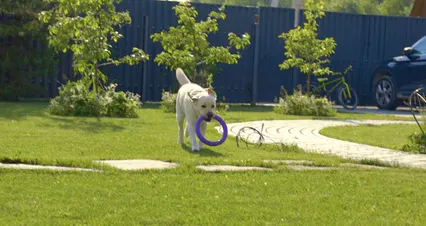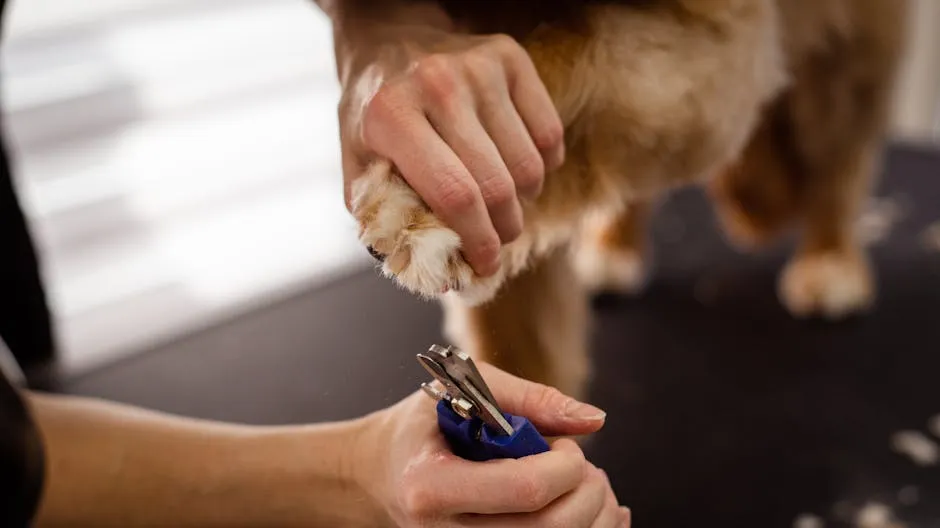
Why Are Dogs’ Noses Wet?
Introduction
Have you ever wondered why your dog’s nose is often wet? Many people believe that a wet nose signals good health. However, that’s just a common misconception. Let’s uncover the science behind this curious canine feature.
Summary and Overview
A dog’s nose is unique and complex. Its anatomy plays a vital role in various functions. Wetness enhances their sense of smell, helping them detect scents in their environment. This article will break down the anatomy of a dog’s nose, explain its functions, and discuss why moisture is essential. Understanding these factors will deepen your appreciation for your furry friend’s incredible abilities.
Speaking of appreciation, you might want to show your pup some love with a Dog Nose Moisturizer. It can help keep their nose hydrated and healthy, especially during those dry winter months.
The Anatomy of a Dog’s Nose
Structure and Function
Dogs have a fascinating nose structure. Their noses contain numerous olfactory receptors, allowing them to identify various scents. The mucous membranes produce a thin layer of moisture, which is crucial for trapping scent particles. One of the most important features is the rhinarium, the moist surface of the nose. This area helps increase scent absorption and enhances their remarkable smelling abilities.
How Dogs Use Their Nose
Dogs rely heavily on their noses for communication and exploration. They use scent to gather information about their surroundings and identify other animals and humans. Statistics show that dogs can detect scents up to 100,000 times better than humans. This impressive ability allows them to interact with the world in ways we can only imagine.
To keep your furry detective in top shape, consider investing in a Dog First Aid Kit. Accidents happen, and it’s best to be prepared for anything your adventurous pup might encounter!

Why Are Dog Noses Wet?
Natural Moisture Production
Have you ever wondered why your dog’s nose is often wet? One reason lies in mucous secretion. This thin layer of mucous is vital for scent absorption. It helps trap scent particles, enhancing your dog’s remarkable sense of smell.
Dogs also maintain this moisture through licking. When they lick their noses, they not only keep them clean but also reapply saliva. This behavior reinforces the mucous layer, allowing for better scent detection. So, every time your furry friend gives their nose a good lick, they’re just enhancing their sniffing capabilities!
And let’s not forget hydration! Keeping your pup well-hydrated is essential. A Pet Water Bottle is a great way to ensure they can drink on the go, whether you’re hiking or just out for a walk.
Environmental Factors
Environmental conditions play a significant role in nose moisture. For instance, high humidity can keep a dog’s nose wetter. In contrast, dry or windy weather can lead to drier noses. Understanding environmental factors can provide insight into how they affect your dog’s health.
Environmental conditions, such as humidity and temperature, can significantly impact your dog’s nose moisture. Learn more about how environmental factors affect health.
Activities also contribute to a wet nose. Dogs love playing in water or rolling in the grass. These joyful moments lead to moisture accumulation on their noses. So, if you see your dog with a damp nose after a fun day outside, it’s a sign they’re just exploring their world!

Cooling Mechanism
A wet nose is also an effective cooling mechanism for dogs. Unlike humans, dogs don’t sweat through their skin. Instead, they rely on their noses and panting to regulate body temperature.
When moisture evaporates from their noses, it cools their body. This process is especially helpful during warmer days or after vigorous play. It’s nature’s way of helping your pup stay comfortable and cool. So, that wet nose isn’t just cute; it’s a functional part of your dog’s cooling system!
What Does a Dry Nose Mean?
Causes of a Dry Nose
A dry nose in dogs can happen for several reasons. One common cause is sleeping. When dogs rest, they don’t lick their noses as often. This can lead to dryness. Dehydration is another factor. If your dog isn’t drinking enough water, their nose may dry out. Environmental exposure also plays a role. Hot weather or windy conditions can cause a dog’s nose to lose moisture.
While a dry nose is often harmless, there are times when it becomes a concern. If your dog’s nose remains dry and shows signs of cracking or flaking, consult a veterinarian. It’s especially important to seek help if you notice other symptoms like lethargy or loss of appetite. Keeping an eye on your dog’s overall behavior can help you determine if a vet visit is necessary.

Speaking of vet visits, a Dog Health Care Guide Book can equip you with all the knowledge necessary to keep your pup in tip-top shape!
Health Indicators of a Dog’s Nose
Myths and Realities
Many people believe that wet noses indicate good health. However, this is more of a myth. A dog’s nose can be wet or dry for various reasons. Factors like activity level and environment can affect moisture levels. Therefore, it’s not reliable to judge health based solely on nose wetness.
Nose moisture does not guarantee your dog is healthy. Similarly, a dry nose doesn’t automatically mean they’re sick. A dog can have a dry nose and still be perfectly fine. It’s vital to consider other signs and symptoms when evaluating your dog’s health.

Signs to Watch For
Changes in a dog’s nose can indicate health issues. If you notice a dry nose that’s also flaky or cracked, it may be a sign of a problem. Additionally, excessive wetness can also be concerning. If your dog’s nose is dripping or has an unusual discharge, it could indicate allergies or infections.
Look for other symptoms too. Is your dog coughing, sneezing, or showing signs of distress? These may accompany a dry or excessively wet nose. Monitoring your dog for these signs is essential for early detection of potential health issues.
Keeping Your Dog’s Nose Healthy
Basic Care Tips
Maintaining a healthy nose is straightforward. Regular cleaning is key. Use a damp cloth to wipe away dirt or debris. This keeps the nose clean and reduces the risk of irritation.
Moisturizing can also help. If your dog’s nose appears dry, consider using a dog-safe moisturizer. Always check with your veterinarian before applying anything. Regular veterinary check-ups are crucial too, as they can identify any underlying health problems early on. A proactive approach ensures your dog’s nose stays healthy and functional.

And while you’re at it, don’t forget to pamper your pup with a cozy Dog Bed. A good night’s sleep is essential for their overall health, including their nose!
Recognizing Abnormal Conditions
It’s important to stay alert for any abnormal nose conditions. Look for signs like discharge, bleeding, or significant changes in texture. These symptoms can indicate allergies, infections, or other health concerns.
To monitor changes effectively, check your dog’s nose regularly. Take note of any unusual appearances or behaviors. If you see excessive discharge or bleeding, contact your veterinarian right away. Keeping a watchful eye on your furry friend can lead to timely veterinary care when needed.

FAQs
Does a wet nose mean my dog is healthy?
A wet nose is often considered a sign of good health. However, it’s not a definitive indicator. Dogs can have wet noses and still be unwell. It’s best to assess overall behavior and health.
What causes a dog’s nose to be dry?
Several factors can lead to a dry nose. Dehydration, environmental conditions, or simply waking up from a nap can cause temporary dryness. If a dry nose persists or is accompanied by other symptoms, consult your veterinarian.
How often should I check my dog’s nose?
Regularly check your dog’s nose, ideally during grooming sessions. This will help you notice any changes or abnormalities early on.
When should I be concerned about my dog’s nose?
If you notice significant changes, such as excessive discharge, bleeding, or a persistent dry nose, it’s time to consult your veterinarian.
Can environmental factors affect my dog’s nose condition?
Yes, factors like weather, humidity, and exposure to irritants can affect your dog’s nose moisture levels. Be mindful of these factors to help maintain your pup’s nose health.
Please let us know what you think about our content by leaving a comment down below!
Thank you for reading till here 🙂 And if you’re looking for some fun for your furry friend, check out this Dog Puzzle Toy. It’s a great way to keep their minds active and engaged!
All images from Pexels




